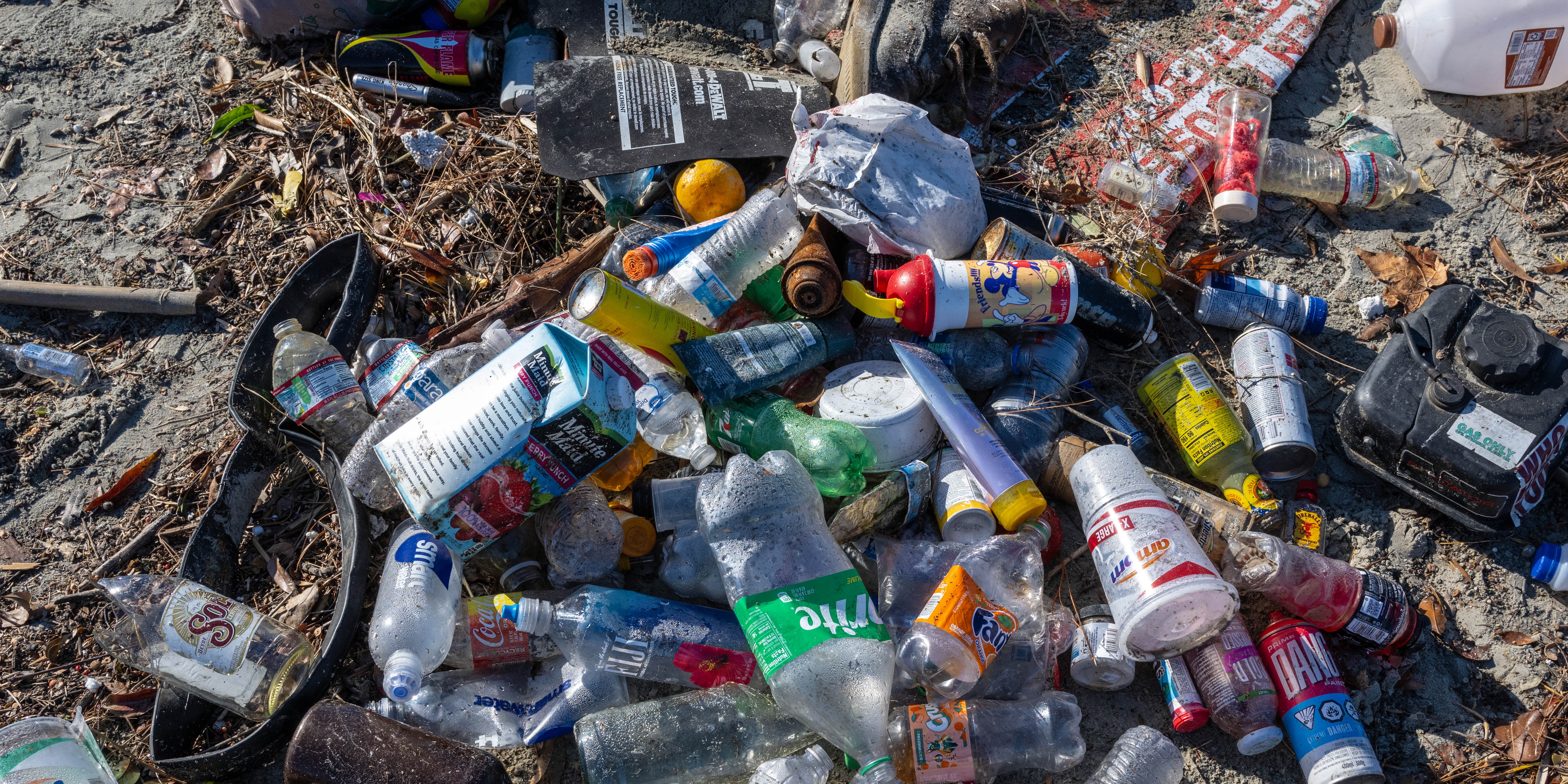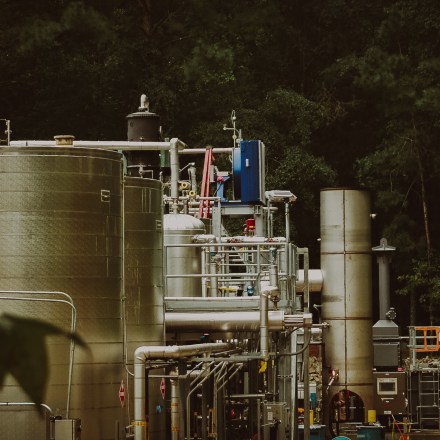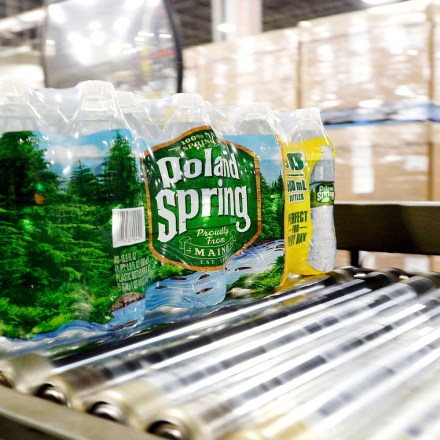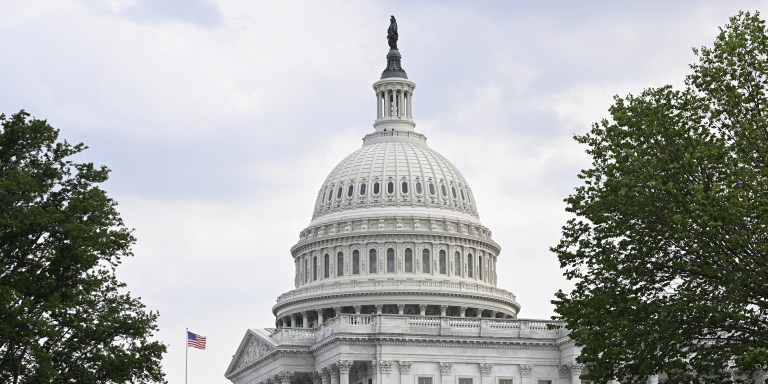When oil and gas companies first launched their campaign to promote recycling to the American public, they pitched the process as a viable and sustainable solution to the plastic pollution problem. More than three decades later, however, the vast majority of plastic waste still ends up incinerated or dumped, less than one-tenth is recycled, and microplastics have been found virtually everywhere on Earth, including the human bloodstream.
The petrochemical industry is now pivoting to another solution: “advanced” recycling. The term, also known as chemical recycling, is used to describe a variety of approaches that can supposedly turn even the most hard-to-recycle plastics into “sustainable” fuels or oils and chemicals that can be used in new plastic production.
But a new, 159-page report, released today by Beyond Plastics and the International Pollutants Elimination Network, or IPEN, casts serious doubt on the technology’s ability to make even a modest dent on the world’s growing plastic burden. In the most comprehensive report on chemical recycling facilities in the U.S. to date, researchers looked at the operations of 11 companies across the country to examine the plastic industry’s claim that chemical recycling can significantly help reduce global plastic pollution.
“The science and data currently available do not support this claim and actually point to the conclusion that chemical recycling would support expansion of plastic production, while potentially causing unacceptable levels of environmental and social harm — as well as impacts on human health — through emissions, waste generation, energy consumption, and contaminated outputs,” the report’s authors write.
The 11 facilities have the stated ability to process less than 1.3 percent of America’s annual plastic waste.
Researchers found that, collectively, the 11 facilities have the stated ability to process less than 1.3 percent of America’s annual plastic waste. Additionally, it was unclear if many of the facilities were even operating at their maximum stated capacity.
“For a lot of these plants, how much plastic they’ve actually processed is unknown,” Jennifer Congdon, a report contributor and deputy director of Beyond Plastics, told The Intercept. “There’s no requirement for public disclosure.”
Publicly Subsidized Failure
The lack of transparency surrounding chemical recycling facilities is especially concerning given the fact that five of the 11 plants have received public subsidies in the form of federal grants, state tax abatements, low-interest green bonds, or government loan guarantees.
The Brightmark Energy facility in Ashley, Indiana, for example, has received $4.55 million in grants and tax credits, as well as $185 million in tax-free bonds, according to the report’s findings. However, the plant is still operating in a test phase at one-fiftieth of its publicized capacity, four years after breaking ground.
Despite failing to achieve its production targets, Brightmark attempted to expand to Georgia in 2021 to build what would be the nation’s largest chemical recycling plant. The economic development group of Georgia’s Macon-Bibb County inked a tentative deal to provide $500 million in tax-exempt bonds to finance the construction of the plant, contingent on evidence that Brightmark’s Indiana plant was producing and selling product. Brightmark was unable to provide such evidence, and the project was officially killed in April 2022.
“The Brightmark example is really important, because they were not even fully operating and trying to expand into Georgia,” said Congdon. “Georgia said, ‘You show us that you’re actually making product and selling it, and then we’ll give you this money.’ That didn’t happen. When they’re being held to account to actually prove that they’re viable, in this case with Brightmark, it just didn’t work.”
“The math doesn’t work out.”
At the federal level, various incentives exist that could promote the continued expansion of chemical recycling, including the Department of Energy’s $25 million Strategy for Plastic Innovation, as well as the Inflation Reduction Act, which makes chemical recycling “approaches” eligible for a $10 billion tax credit program, though the report’s authors note that “it is not clear how such approaches are defined.”
“If we’re going to be putting money into projects that are going to address plastic pollution, it should be source reduction strategies,” Congdon said. “I would hope that any public official is doing their due diligence on whether or not they should be using public resources to finance these things. They should actually look into the viability and the pollution before making their choice, and I think the math doesn’t work out.”
A Regulatory Shell Game
Access to public coffers is not the only way the U.S. government has encouraged chemical recycling. Future projects may benefit from a recent spate of state-level laws that have lessened the regulatory burden on so-called advanced recycling. The bills reclassify chemical recycling as manufacturing, which faces less stringent environmental guidelines. The American Chemistry Council, the country’s largest petrochemical industry group, has supported the bills with a lobbying push, claiming that solid waste facility permits are often inapplicable to chemical recycling and the change would simply regulate the facilities more accurately.
“There’s an enormous amount of industry-driven hype around chemical recycling and the main reason for that is they don’t want to see legislation at the state or federal level that restricts the production of plastic,” said Lee Bell, policy adviser to IPEN, a network of more than 600 nongovernmental organizations in over 125 countries. “It’s widely agreed that the only way to reduce plastic pollution in a substantive way is to cut production of plastic itself.”
Indeed, the United States’ support for chemical recycling appears to be an outlier in the international field.
At the 2023 Basel Convention, the leading international decision-making body on the movement and disposal of hazardous waste, delegates rejected the inclusion of chemical recycling in global guidance on plastic waste management.
“During the extended negotiations on the matter, over 50 countries objected to the inclusion of chemical recycling in the guidelines on the basis that there was no available independent data to demonstrate that chemical recycling constituted environmentally sound management of plastic waste,” states the Beyond Plastics report. “Despite 50 years of operation of these technologies, no empirical data was presented to demonstrate they met criteria for environmentally sound management.”
Bell, who was a member of the Basel Convention Working Group on the technical guidelines for environmentally sound management of plastic waste from 2019 to 2023, provided more background in an email to The Intercept.
“The Africa region spoke as a group opposing the inclusion of chemical recycling and they represented 54 countries, mainly on the basis that they did not want to become the destination for these technologies, the hazardous waste they create and the toxic emissions they produce, having already experienced the dumping of other wastes from the global north under the guise of ‘recycling,’” Bell wrote. “They were not alone and several other countries also had serious concerns about the lack of data associated with the industry.”
The data that is available about chemical recycling raises serious concerns for public health and environmental risks. A report from the National Resources Defense Council in February 2022 looked at state-level permit data and found that many chemical recycling facilities are permitted to release hazardous air pollutants and “chemicals known or suspected to cause cancer or other serious health effects like birth defects.”
The Beyond Plastics report also cites scientific literature that has found “emissions of persistent, cancer-causing compounds from the chemical recycling facilities or their fuel products,” including dioxins, volatile organic compounds, and heavy metals. The authors conducted a 5-mile analysis around each of the 11 plants using the EPA’s Environmental Justice Screening and Mapping Tool, which found that “eight of the plants are located in areas with lower-than-average levels of income, compared to either state or national averages; and seven have higher-than-average concentrations of people of color than the rest of the state and country.”
“What data we do have raises red flags about this technology,” said Bell. “If we were to see wide-scale scale-up and build-out, we could foresee very, very significant emission impacts and very little to show for it in terms of recycled plastic production.”










